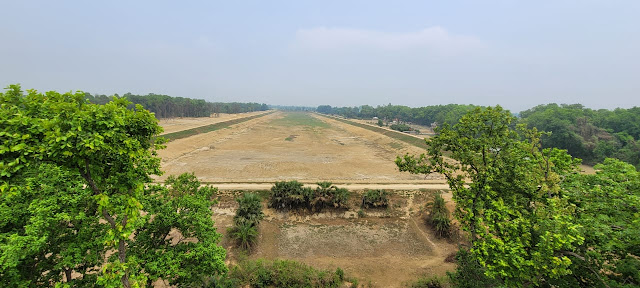Boro worries in Barind
Saturday, December 26, 2009
Declining groundwater hits irrigation
The drought that hit aman production in the Barind region this season is likely to affect the forthcoming boro too.
The anxiety deepens as the irrigation machines cannot pump up water properly due to drop in the underground water level in the Barind tract under Rajshahi, Naogaon and Chapainawabganj districts.
Against this backdrop, Barind Multipurpose Development Authority (BMDA) has started recommending boro growers to cultivate other crops like wheat, maize and pulses that are relatively less dependant on irrigation.
The BMDA also sent notices to its branches in 25 upazilas in the three districts asking them to ensure irrigation of no more than 100 bighas of land with every deep tube-well despite the growers' demand for more.
"We are urging farmers to divert to other crops that hardly need irrigation with an aim to reduce pressure on the deep tube-wells," said BMDA Executive Director Abdul Mannan.
He explained that farmers used to irrigate some 350 to 400 bighas of land for boro from each deep tube-well while the deep tube-wells are normally set up to irrigate a maximum of 180 bighas of land.
BMDA arranges irrigation of around 3.24 lakh hectares of land in the region pumping out underground water with some 12,000 deep tube-wells, he says.
Department of Agriculture Extension (DAE) sources said aman was cultivated on about 3.79 lakh hectares of land in this region this season.
They said the average per hectare output, recorded so far, is 2.3 tonnes against last year's 2.6 tonnes. The farmers have already harvested 80 percent of their crop.
This year aman harvest is good everywhere except in the Barind region where there was hardly any rain during the last monsoon, said agriculture officials.
Kawsar Ali who sends weekly water level reports to Water Development Board from Mundumala said the water level has dropped by 10 metres in the area during the last 14 years because of poor rainfall and drying up of the Padma.
"It took around 15 hours to irrigate one bigha in the previous years. But this year it takes around 30 hours to irrigate the same land," said Aftab Dewan, a farmer of Nachole.
The DAE in Rajshahi has lowered its boro cultivation target and fixed it at 83,811 hectares of land, which is 1,245 hectares less than last year's 85,056 hectares.
The DAE sources said the boro cultivators have prepared seedbeds on some 8,000 hectares of land in the nine upazilas of Rajshahi.
http://www.thedailystar.net/newDesign/news-details.php?nid=119332


Comments
Post a Comment